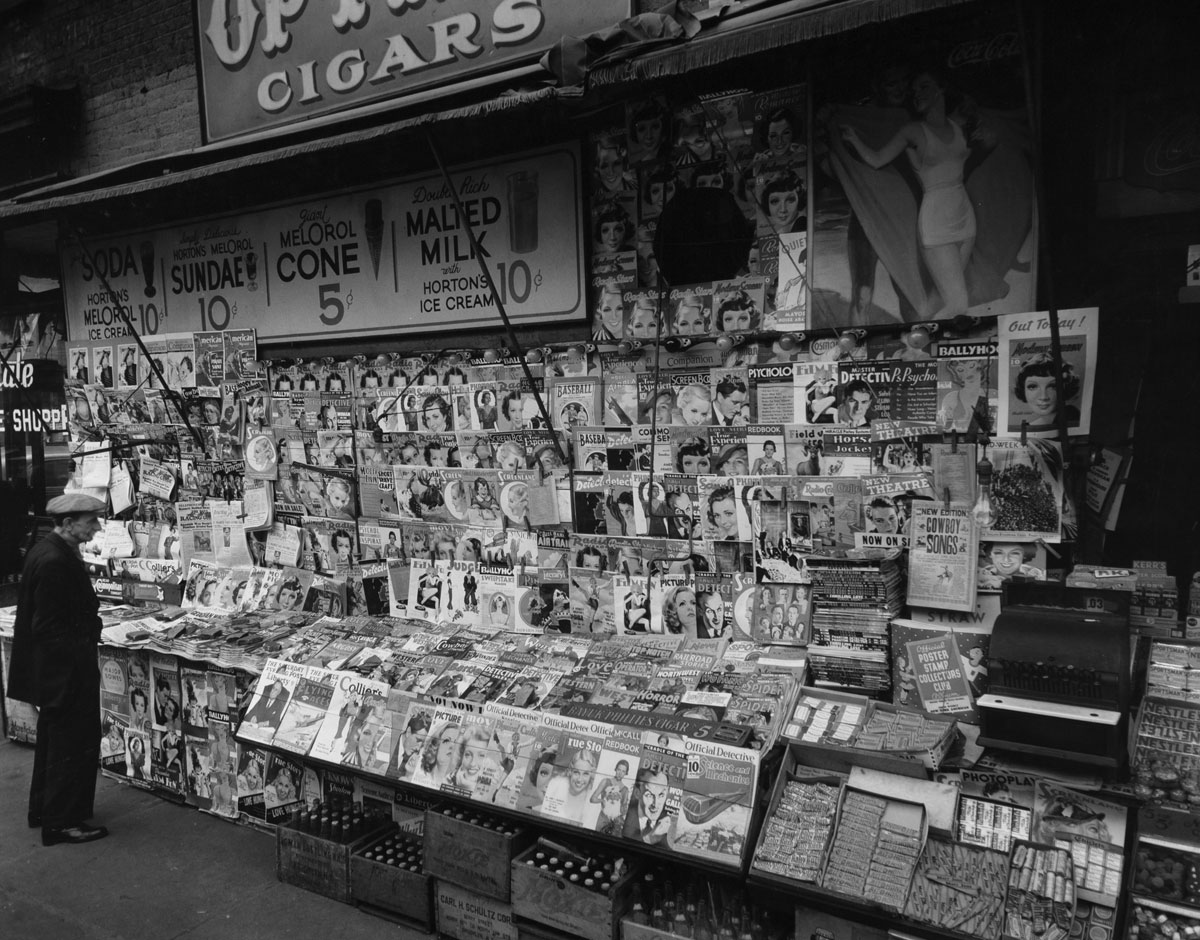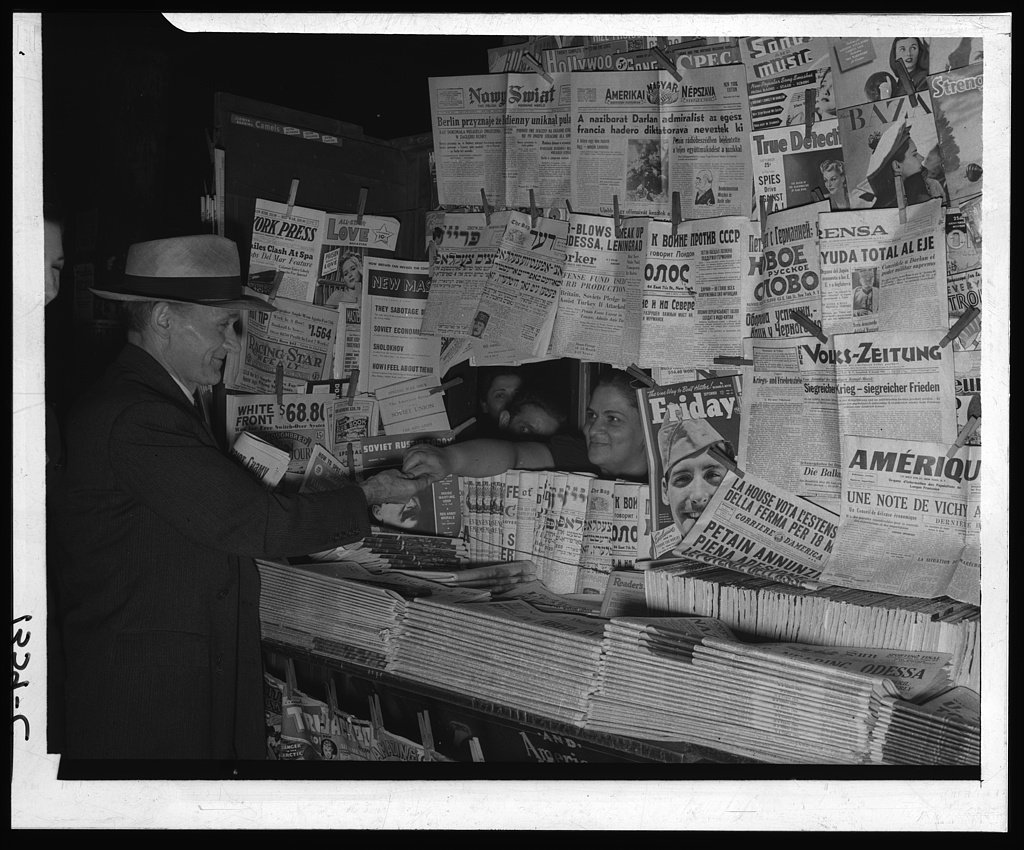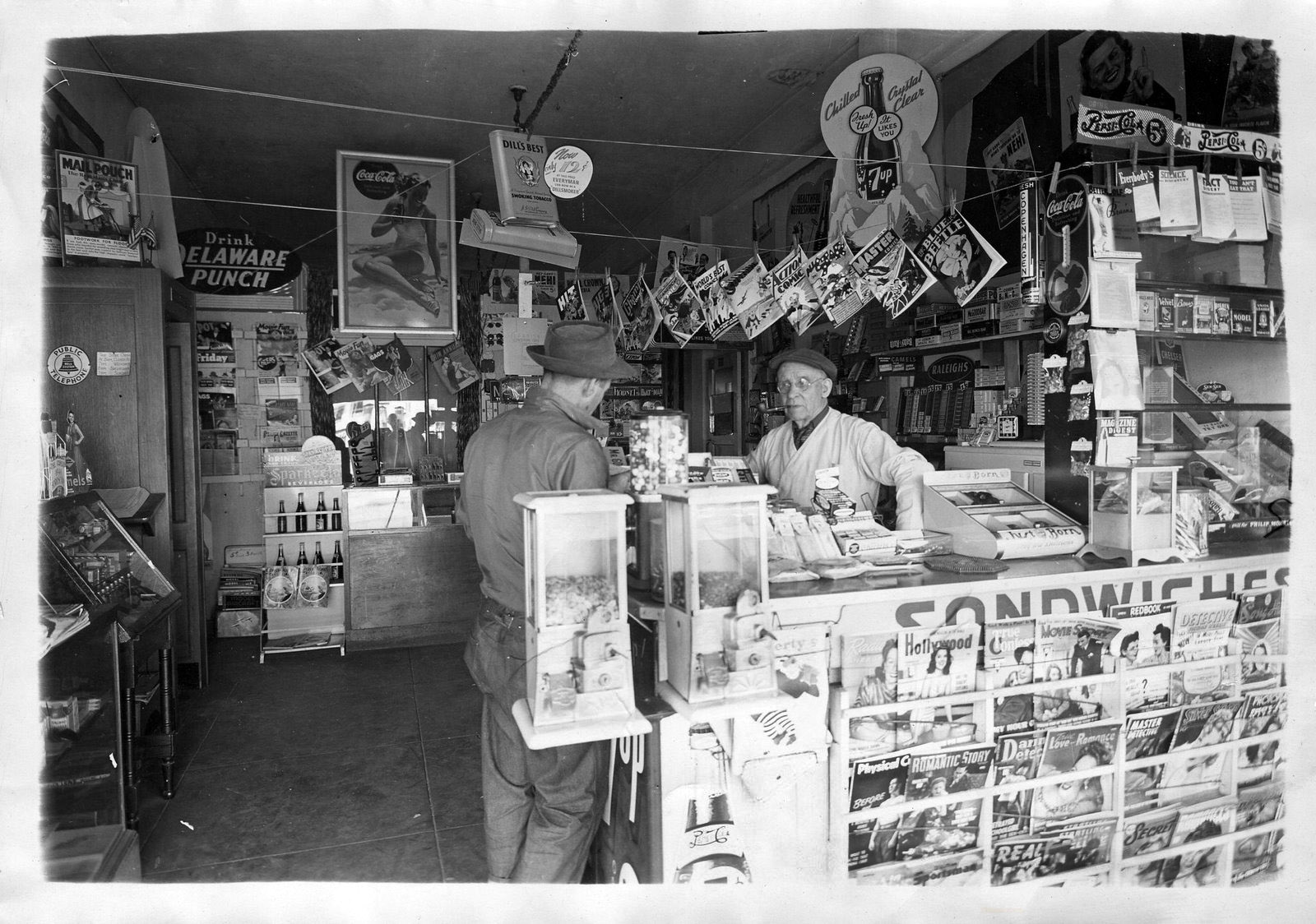LizzieMaine
Bartender
- Messages
- 34,195
- Location
- Where The Tourists Meet The Sea

Manhattan, 1935. Photo by Berniece Abbott. "Gimme a Daily Worker and a bottle of Moxie."
The selection of magazines is interesting -- most of what's offered was considered "trash" by the pecksniffs of the time. There's a ton of movie fan magazines, a good number of Macfadden detective and confession magazines, a whole section of pulps, a couple of "do it yourself" type radio publications, a couple of "pop psychology" things and even several cartoon magazines that specialized in raunchy humor. But the only slicks that appear are the staunchly middlebrow Saturday Evening Post and Colliers. If you wanted Scribners or Harpers or some other highbrow reading you were in the wrong neighborhood -- but I do spot a copy of "Common Sense," a popular radical/socialist magazine of the time.
We never had shack-type newsstands here -- they couldn't stand up to the harshness of the weather, so all our newsstands were in rented storefronts. Our local such joint, State News, carried the local papers, the Boston papers, and the New York papers -- although when you bought the New York Sunday News, you got the current week's comic section and Coloroto magazine wrapped around *last week's* actual newspaper. This didn't bother me, because I bought the News mostly for the funnies, but I thought it was weird.
Most such joints also had a small soda fountain, and possibly sold wrapped sandwiches along with the soda, ice cream, and cigarettes. We didn't get the lottery here until the mid-70s, but when it appeared it was a great boon to such shops. There was also usually a pay phone and Western Union service, and possibly even a service allowing you to pay your telephone and electric bills. They were also usually Greyhound Bus ticket agencies. Basically these shops were the pre-internet version of the internet -- which is probably why they no longer exist.





